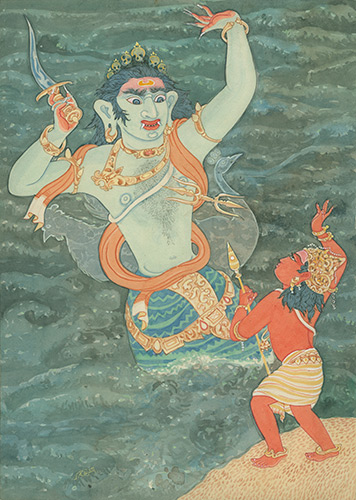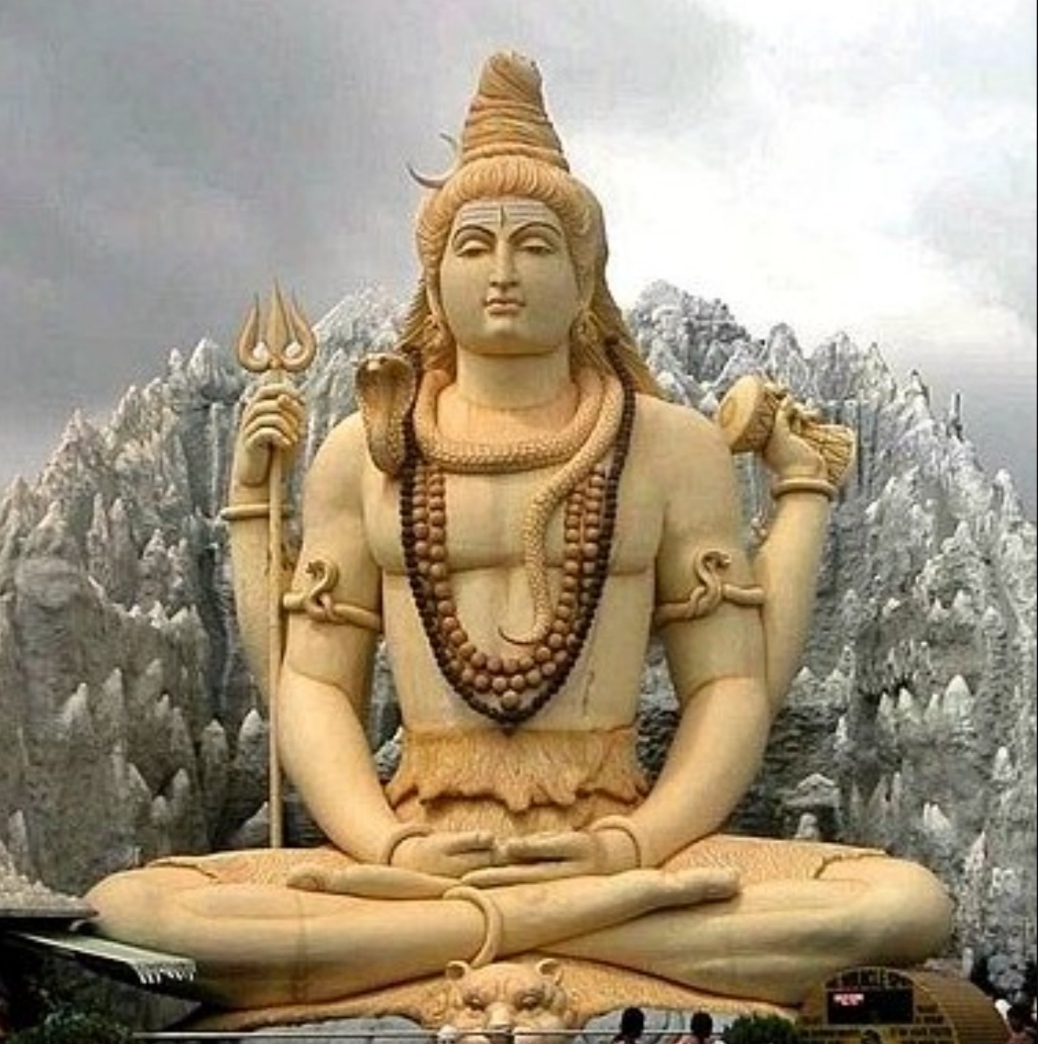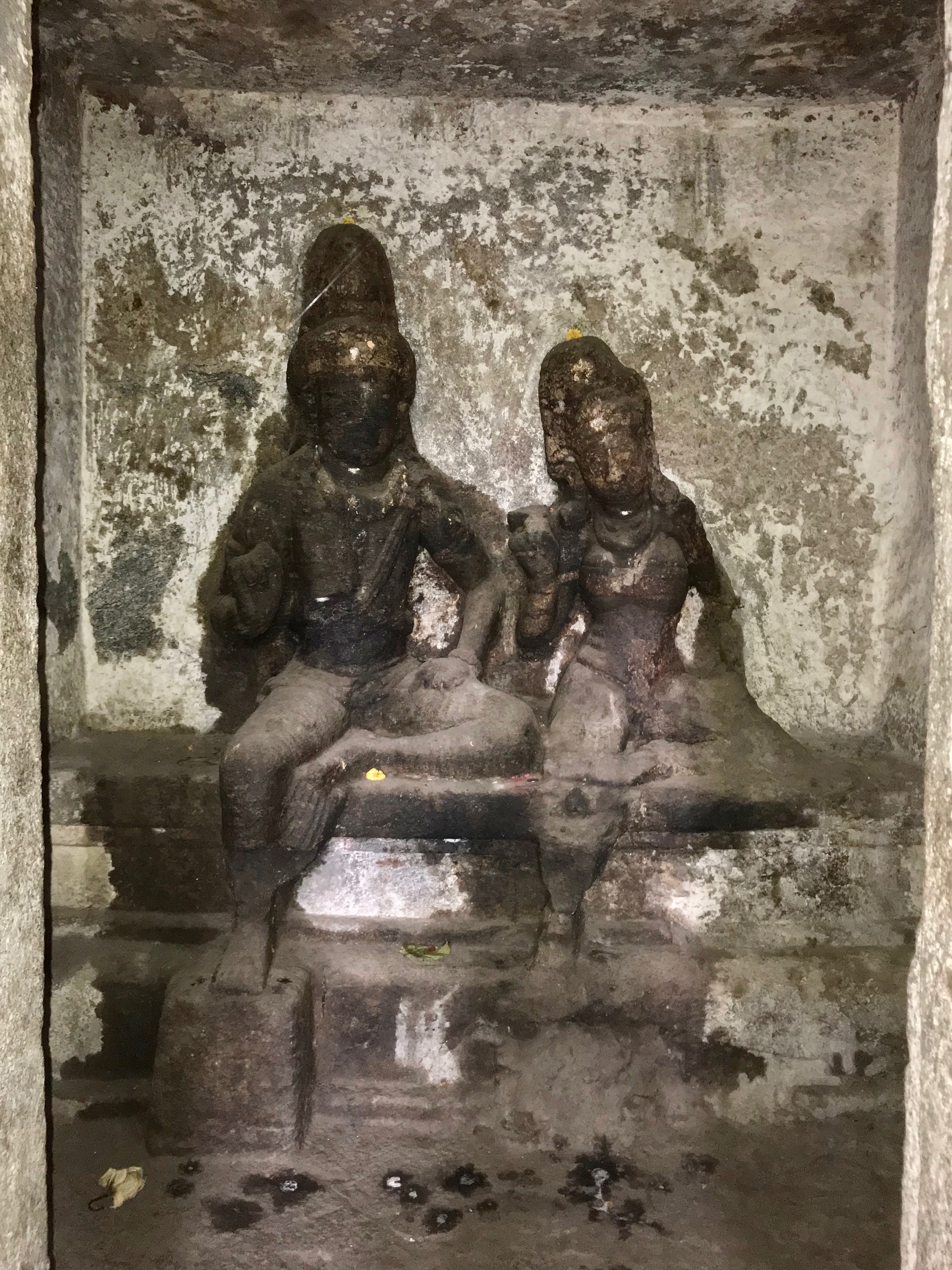|
Kaumaram
__NOTOC__ Kaumaram (, ) is a Hindu denomination that primarily venerates the Hindu deity of war, Kartikeya, also known as Kumaran, Murugan (in South India), Arumugan'','' and Subrahmanyan. Devotees of Kumaran, called Kaumaras, also revere members of his family: Parvati, Shiva, and Ganesha, as well his consorts, Devasena and Sundaravalli, the daughters of Vishnu in Tamil tradition. The important theological texts relating to Kumara are a part of the Shaiva agama canon. This sub-tradition is found among the Tamils, Kannadigas, and the Vedda, in South India, Sri Lanka, and among the Tamil diaspora worldwide. The love story of Kumara/Murugan and his wife Valli, a girl from a local tribe, is popular in Tamil Nadu, where Kumara acquired the status of a national god. Legend In the ''Ramayana'', Kartikeya is regarded to be the first son of Shiva who was incubated by the Kṛttikās, the six maidens representing the Pleiades, and the ''Puranas'' state that six children thus fused int ... [...More Info...] [...Related Items...] OR: [Wikipedia] [Google] [Baidu] |
Kartikeya
Kartikeya (/Sanskrit phonology, kɑɾt̪ɪkejə/; ), also known as Skanda (Sanskrit phonology, /skən̪d̪ə/), Subrahmanya (/Sanskrit phonology, sʊbɾəɦməɲjə/, /ɕʊ-/), Shanmukha (Sanskrit phonology, /ɕɑnmʊkʰə/) and Murugan (/Sanskrit phonology, mʊɾʊgən/), is the Hinduism, Hindu List of war deities, god of war. He is generally described as the son of the deities Shiva and Parvati and the brother of Ganesha. Kartikeya has been an important deity in the Indian subcontinent since Vedic period, ancient times. Mentions of Skanda in the Sanskrit literature data back to fifth century BCE and the mythology relating to Kartikeya became widespread in North India around the second century BCE. Archaeological evidence from the first century CE and earlier shows an association of his iconography with Agni, the Hindu god of fire, indicating that Kartikeya was a significant deity in early Hinduism. He is hailed as the "favoured god of the Tamils", and the tutelary dei ... [...More Info...] [...Related Items...] OR: [Wikipedia] [Google] [Baidu] |
Murugan
Kartikeya (/ kɑɾt̪ɪkejə/; ), also known as Skanda ( /skən̪d̪ə/), Subrahmanya (/ sʊbɾəɦməɲjə/, /ɕʊ-/), Shanmukha ( /ɕɑnmʊkʰə/) and Murugan (/ mʊɾʊgən/), is the Hindu god of war. He is generally described as the son of the deities Shiva and Parvati and the brother of Ganesha. Kartikeya has been an important deity in the Indian subcontinent since ancient times. Mentions of Skanda in the Sanskrit literature data back to fifth century BCE and the mythology relating to Kartikeya became widespread in North India around the second century BCE. Archaeological evidence from the first century CE and earlier shows an association of his iconography with Agni, the Hindu god of fire, indicating that Kartikeya was a significant deity in early Hinduism. He is hailed as the "favoured god of the Tamils", and the tutelary deity of the Kurinji region in Sangam literature, whose cult gained popularity later. As per theologists, the Tamil deity of Murugan coalesced ... [...More Info...] [...Related Items...] OR: [Wikipedia] [Google] [Baidu] |
Hindu Denominations
Hindu denominations, ''sampradayas'', traditions, movements, and sects are traditions and sub-traditions within Hinduism centered on one or more gods or goddesses, such as Vishnu, Shiva, Shakti and so on. The term ''sampradaya'' is used for branches with a particular founder-guru with a particular philosophy. Hinduism has no central doctrinal authority and many practising Hindus do not claim to belong to any particular denomination or tradition. Four major traditions are, however, used in scholarly studies: ''Vaishnavism'', ''Shaivism'', ''Shaktism'' and ''Smartism''.Lance Nelson (2007), An Introductory Dictionary of Theology and Religious Studies (Editors: Orlando O. Espín, James B. Nickoloff), Liturgical Press, , pages 562–563 These are sometimes referred to as the denominations of Hinduism, and they differ in the primary deity at the centre of each tradition.SS Kumar (2010), Bhakti — the Yoga of Love, LIT Verlag Münster, , pp. 35–36. A notable feature of Hindu denom ... [...More Info...] [...Related Items...] OR: [Wikipedia] [Google] [Baidu] |
Tiruppugal
The ''Tiruppugal'' (Tamil: , ''Thiruppugazh'', IPA/Tamil: , meaning 'Holy Praise' or 'Divine Glory'), sometimes spelled ''Thiruppugazh'', is a 14th-century anthology of Tamil religious songs dedicated to Murugan (Kartikeya), the son of Shiva, written by the poet-saint Arunagirinathar (Tamil: , ', ). The anthology is considered one of the central works of medieval Tamil literature, both for its poetical and musical qualities, and for its religious, moral and philosophical content. Description There are no historical records of the life of Arunagirinathar, and what we know of the composition of the Thiruppugazh is largely derived from oral traditions and legends recorded in commentaries on the work. According to these, Arunagirinathar led a hedonistic life as a young man. His disgust at his own conduct led him to attempt suicide by jumping off the temple tower at Tiruvannamalai. He was saved by Murugan himself. Arunagirinathar was transformed, and began a long pilgrimage, vis ... [...More Info...] [...Related Items...] OR: [Wikipedia] [Google] [Baidu] |
Sundaravalli
Valli () is a Hindu goddess, and the second consort of the deity Murugan. An incarnation of the goddess Sundaravalli, daughter of Vishnu, Valli is born on earth as the daughter of a chieftain, leading a life of a huntress. Murugan, the god of war, eventually woos and weds her, according to Tamil folklore. Both of their legends originate from the mountain region also known as Kurunji in Tamilakam. Her sister, Amritavalli (Devasena), also succeeds in marrying Murugan as the adopted daughter of Indra, making them sister-wives. Nomenclature ''Vaḷḷi'' is used to refer to many local or Village gods in Tamil Nadu and Kerala in India and by the Rodiya and Vedda peoples of Sri Lanka. Vaḷḷi is also known as ''Pongi'' at Vallimalai in Vellore, Tamil Nadu, and the pond from which she drew water to quench the thirst of Murugan is still there. This pond, though in an open ground, does not receive the rays of the sun. Vedda still inhabit Kataragama region and there are temples ... [...More Info...] [...Related Items...] OR: [Wikipedia] [Google] [Baidu] |
Tirumurukāṟṟuppaṭai
''Tirumurukātṟuppatai'' (, meaning ''Guide to Lord Murugan'') is an ancient devotional Tamil poem in the Sangam literature genre entirely dedicated to the god Murugan. Murugan is described as the nephew of the god Vishnu, who is called Mayon or the ruler of the worlds. Authored by Nakkiranar, it is the first poem in the Ten Idylls (''Pattuppāṭṭu'') anthology. The poem is generally dated to the late classical period (2nd to 4th century CE), with some scholars suggesting it may have been composed a few centuries later. The anthologies and poems of the Sangam literature have numerous references and verses to Murugan – also known as Subrahmanya, Kumara, Skanda, Kartikeya in other parts of India. The ''Tirumurukarruppatai'' poem is exclusively about different manifestations and shrines of Murugan. It describes different major temples dedicated to him in the Tamil region, six locations, the natural scenes, worship practices and the culture of the people. Description ... [...More Info...] [...Related Items...] OR: [Wikipedia] [Google] [Baidu] |
Skanda Purana
The ''Skanda Purana'' ( IAST: Skanda Purāṇa) is the largest '' Mukhyapurāṇa'', a genre of eighteen Hindu religious texts. The text contains over 81,000 verses, and is of Shaivite literature, titled after Skanda, a son of Shiva and Parvati (who is also known as Murugan in Tamil literature). While the text is named after Skanda, he does not feature either more or less prominently in this text than in other Shiva-related Puranas. The text has been an important historical record and influence on the Hindu traditions and rituals related to the war-god Skanda. The earliest text titled ''Skanda Purana'' likely existed by the 8th century CE, but the ''Skanda Purana'' that has survived into the modern era exists in many versions. It is considered as a living text, which has been widely edited, over many centuries, creating numerous variants. The common elements in the variant editions encyclopedically cover cosmogony, mythology, genealogy, dharma, festivals, gemology, temples ... [...More Info...] [...Related Items...] OR: [Wikipedia] [Google] [Baidu] |
Valli
Valli () is a devi, Hindu goddess, and the second consort of the deity Murugan. An incarnation of the goddess Sundaravalli, daughter of Vishnu, Valli is born on earth as the daughter of a chieftain, leading a life of a huntress. Murugan, the god of war, eventually woos and weds her, according to Tamil mythology, Tamil folklore. Both of their legends originate from the mountain region also known as Sangam landscape, Kurunji in Tamilakam. Her sister, Devasena, Amritavalli (Devasena), also succeeds in marrying Murugan as the adopted daughter of Indra, making them sister-wives. Nomenclature ''Vaḷḷi'' is used to refer to many Village deities of South India, local or Grāmadevatā, Village gods in Tamil Nadu and Kerala in India and by the Rodiya and Vedda peoples of Sri Lanka. Vaḷḷi is also known as ''Pongi'' at Vallimalai in Vellore district, Vellore, Tamil Nadu, and the pond from which she drew water to quench the thirst of Murugan is still there. This pond, though in an o ... [...More Info...] [...Related Items...] OR: [Wikipedia] [Google] [Baidu] |
Devasena
Devasena (, , ) is the Hindu goddess of aspirations, and the consort of the war god Kartikeya (Murugan). She is also known as Devayanai, Deivanai, and Deivayanai in Tamil texts. Her name is also spelled as Teyvanai or Tevayanai (). Devasena is described as the daughter of the ''Prajapati'' Daksha in the ''Mahabharata'', while some Sanskrit scriptures consider her as the daughter of Indra, the king of the devas (gods), and his wife Shachi. In the Tamil iteration of the Skanda Purana, she is portrayed as the daughter of the god Vishnu, who is later adopted by Indra. She is betrothed to Kartikeya by Indra, when he becomes the commander-in-chief of the devas. In Tamil accounts, Devasena is generally depicted as an antithesis of Valli, her sister-wife; together they complete the deity. Devasena is generally depicted with Murugan, and is often also accompanied by Valli. In Tamil Nadu, Devasena does not enjoy independent worship, but is venerated as Murugan's consort in most of ... [...More Info...] [...Related Items...] OR: [Wikipedia] [Google] [Baidu] |
Vishnu
Vishnu (; , , ), also known as Narayana and Hari, is one of the Hindu deities, principal deities of Hinduism. He is the supreme being within Vaishnavism, one of the major traditions within contemporary Hinduism, and the god of preservation (sattva). Vishnu is known as ''The Preserver'' within the Trimurti, the triple deity of Para Brahman, supreme divinity that includes Brahma and Shiva.Gavin Flood, An Introduction to Hinduism' () (1996), p. 17. In Vaishnavism, Vishnu is the supreme Lord who creates, protects, and transforms the Hindu cosmology, universe. Tridevi is stated to be the energy and creative power (Shakti) of each, with Lakshmi being the equal complementary partner of Vishnu. He is one of the five equivalent deities in Panchayatana puja of the Smarta tradition of Hinduism. According to Vaishnavism, the supreme being is with qualities (Saguna Brahman, Saguna), and has definite form, but is limitless, transcendent and unchanging absolute Brahman, and the primal Atma ... [...More Info...] [...Related Items...] OR: [Wikipedia] [Google] [Baidu] |
Āgama (Hinduism)
The Agamas (Devanagari: , IAST: ) are a collection of several Tantric literature and scriptures of Hindu schools. Julius Lipner (2004), Hinduism: the way of the banyan, in The Hindu World (Editors: Sushil Mittal and Gene Thursby), Routledge, , pages 27–28 The term literally means tradition or "that which has come down", and the Agama texts describe cosmology, epistemology, philosophical doctrines, precepts on meditation and practices, four kinds of yoga, mantras, temple construction, deity worship and ways to attain sixfold desires. These canonical texts are in Sanskrit and Tamil. The three main branches of Agama texts are Shaiva, Vaishnava and Shakta. The Agamic traditions are sometimes called Tantrism, although the term "Tantra" is usually used specifically to refer to Shakta Agamas.Mariasusai Dhavamony (1999), Hindu Spirituality, Gregorian University and Biblical Press, , pages 31–34 with footnotes The Agama literature is voluminous, and includes 28 Shaiva Agamas, ... [...More Info...] [...Related Items...] OR: [Wikipedia] [Google] [Baidu] |
Batu Caves
Batu Caves is a 325-m tall mogote with a series of limestone caves in Gombak, Selangor, Malaysia. It is located about north of the capital city of Kuala Lumpur. The cave complex contains many Hindu temples, the most popular of which is a shrine dedicated to the deity Murugan. It is the focal point of the Tamil Hindu festival of Thaipusam in Malaysia. The complex also hosts a high Murugan statue, one of the largest Murugan statues in the world. Etymology The name for the cave complex is derived from the word ''batu'' from Malay meaning "rock". The hill was called as "Kapal Tanggang" (ship of Si Tanggang) as per ''Si Tanggang'', the Malay version of the Minang folktale '' Malin Kundang''. In Tamil, the temple complex is called as ''Pathu malai'' (பத்து மலை). History The caves were used as shelters by the indigenous Temuan people, a tribe of Orang Asli. In the 1860s, Chinese settlers began excavating guano from the caves, used as fertilisers. In 1878, ... [...More Info...] [...Related Items...] OR: [Wikipedia] [Google] [Baidu] |






